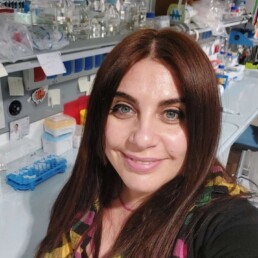The role and mechanism of three RNA binding proteins, namely LARP4A, LARP4B and LARP 6 in cancer cell biology
https://www.progetto-goforit.it/wp-content/uploads/2022/01/cmv1.png

Neha Agrawal
Dipartimento:
Scienze e Tecnologia ambientali biologiche e farmaceutiche
Abstract
The proposed project will focus on elucidating the detailed role and mechanism of three RNA binding proteins, namely LARP4A, LARP4B and LARP6 in cancer cell biology. LARP4A, LARP4B and LARP6 belong to the family of La-related proteins and play a pivotal role in numerous essential cellular functions, and defects lead to pathologies, including cancer.
We propose to perform a comprehensive NMR-based metabolomics analysis of LARP4A, LARP4B and LARP6-depleted and mutant cancer cells to identify key metabolic pathways affected by these proteins. These studies will be allied were appropriate with ad hoc cell and in vitro assays (proliferation, redox activity, motility, morphology, binding studies etc.) for a comprehensive understanding of the roles and mechanisms of LARP4A, LARP4B and LARP6.
These studies will reveal the mechanisms of action of how LARPs regulate cancer metabolism and energetic reprogramming. Insights coming from this project would lead to identify novel downstream targets of LARP mutants in cancer cells, and this may lay the foundation for novel therapeutic opportunities in tumours differential expressing LARPs or harbouring LARP mutations.
Acetytransferases, deacetylases and kinases targeting in human diseases
https://www.progetto-goforit.it/wp-content/uploads/2022/01/cmv1.png

Federica Donnarumma
Dipartimento:
Medicina di precisione
Abstract
Mediante approcci multidisciplinari è stato avviato uno studio pioneristico sul ruolo epigenetico della proteina acetil-transferasi NAA60/HAT4. L’attività di ricerca svolta dalla Dott.ssa Donnarumma ha consentito di ipotizzare un ruolo biologico di HAT4 nelle leucemie. L’attività di ricerca ha previsto sia il design di specifici vettori di espressione, che la generazione e la caratterizzazione di linee cellulari over esprimenti HAT4. Queste attività sperimentali si sono rese necessarie sia studi funzionali in vitro che per la produzione eterologa della proteina estendendo le conoscenze biochimiche e ponendo, solide basi per studi futuri studi di drug discovery e protein functionalizzation.




